《英语修辞学原理》
| 作者 | 赵政清主编 编者 |
|---|---|
| 出版 | 成都:西南交通大学出版社 |
| 参考页数 | 252 |
| 出版时间 | 1996(求助前请核对) 目录预览 |
| ISBN号 | 7810229249 — 求助条款 |
| PDF编号 | 89297548(仅供预览,未存储实际文件) |
| 求助格式 | 扫描PDF(若分多册发行,每次仅能受理1册) |
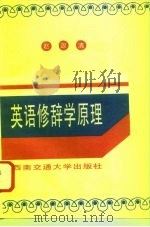
Chapter One Introduction1
1.1 A Definition of Rhetoric1
1.2 The Object of the Study of Rhetoric4
1.3 Rhetoric and Some Other Sciences5
1.3.1 Semantics5
1.3.2 Phonetics6
13.3 Lexicology and Grammar6
1.3.4 Logic6
Exercise 16
Chapter Two The Brief History of Development of Rhetoric and Classical Theory8
Exercise 212
Chapter Three Rhetoric of Words and Expressions13
3.1 Archaisms13
3.2 Obsolete Words and Expressions16
3.3 Colloquialisms17
3.4 Slang18
3.5 Idioms21
3.6 Clichés23
3.7 Jargon24
3.8 Dialect26
3.8.1 The Peculiarities of Poyster′s Derbyshire Dialect27
3.8.2 The Main Characteristics of the Cockney Dialect28
3.9 Vulgarisms29
Exercise 331
Chapter Four Rhetoric of the Sentence38
4.1 Controlled Use of the Passive Voice38
Exercise441
4.2 Dangling Elements42
4.2.1 Dangling Participle44
4.2.2 Dangling Gerund44
4.2.3 Dangling Infinitive45
4.2.4 Dangling Elliptical Clause45
Exercise 546
4.3 Misplaced Modifiers47
Exercise 648
4.4 Front-heaviness of the Sentence49
Exercise 752
4.5 Sentence Embedding53
Exercise 856
4.6 The Sentence56
4.6.1 The Sentence Base56
4.6.2 Absolutes58
4.6.3 Sentence Openers63
Exercise 966
4.7.1 Balanced Style68
4.7 Style68
4.7.2 Curt Style70
4.7.3 Loose Style71
4.7.4 Familiar Style73
4.8 Tone74
Exercise 1078
Chapter Five Syntactical Stylistic Devices Commonly used in English82
5.1 The Rhetorical Question82
5.2 Rogatio83
5.3 Quaesitio85
5.4 Percontatio87
Exercise 1188
5.5 Apo Koinou89
5.6 Ellipsis90
Exercise 1291
5.7 Parenthesis92
Exercise 1394
5.8 Parallelism95
Exercise 1497
5.9 Repetition98
5.9.1 Word Repetition98
5.9.2 Anaphora100
5.9.3 Epiphora101
5.10 Anadiplosis103
5.11 Epanadiplosis104
5.12 Polysyndeton105
Exercise 15106
5.13 Antithesis111
5.14 Climax112
5.15 Anticlimax115
5.16 Aposiopesis115
5.17 Anastrophe117
5.18 Represented Speech120
5.19 Chiasmus122
5.20 Apostrophe123
Exercise 16124
Chapter Six Lexical Stylistic Devices Commonly used in English127
6.1 Figures of Speech127
6.1.1 Extending the Use of Words128
6.1.2 Metaphoric Extension128
6.1.3 Simile131
Exercise 17132
6.1.4 Metaphor133
6.1.4(1) Genuine Metaphor133
6.1.4(2) Dead Metaphors135
6.1.4(3) Mixed Metaphors136
6.1.4(4) Miscellaneous137
6.1.5 Personification138
Exercise 18142
6.1.6 Epithet144
6.2 metonymy145
6.3 Synecdoche146
6.4 Allegory149
6.5 Antonomasia151
6.6 Euphemism152
6.7 Oxymoron154
6.8 Irony157
6.9 Satire163
6.10 Hyperbole166
6.11 Litotes169
6.12 Pun171
6.13 Zeugma172
6.14 Allusion174
6.15 Paradox176
Exercise 19178
6.16.1 Literal Analogy180
6.16 Analogy180
6.16.2 Figurative Analogy182
6.16.3 Suggestions for Writing Analogies183
Exercise 20184
Chapter Seven Phonetic Stylistic Devices Commonly Used in English Poetry186
7.1 Some Basic Terms186
7.1.1 Prosody186
7.1.2(2) Trochee187
7.1.2(3) Dactyl187
7.1.2(1) Iambus(or Iambic)187
7.1.2 metre187
7.1.2(4) Anapaest188
7.1.2(5) Amphibrach188
7.1.2(6) Spondee188
7.1.2(7) Pyrrhic188
7.1.3 Foot189
7.1.3(1) Monometre189
7.1.3(2) Dimetre189
7.1.3(3) Trimetre189
7.1.3(4) Tetrametre190
7.1.3(5) Pentametre190
7.1.3(6) Hexametre190
7.1.5 Alliteration191
7.1.4 Assonance191
7.1.6 Rhyme193
7.1.6(1) End Rhyme194
7.1.6(2) Internal Rhyme194
7.1.7 Cadence197
7.1.8 Refrain197
7.1.9 Scansion198
7.1.10 Verse198
7.2 English Stanzas198
7.2.1 Couplet198
7.2.2 Triplet199
7.2.3 Quatrain200
7.2.4 Cinquain200
7.2.5 Sestet201
7.2.6 Heptastich201
7.2.7 Ottava Rima201
7.2.8 Ballad Stanza202
7.2.9 Spenserian Stanza205
7.3 Types of Poetry206
7.3.1 Sonnet206
7.3.1(1) Petrarchan(or Italian)Sonnet206
7.3.1(2) Shakespearean(English)Sonnet207
7.3.1(3) Miltonic Sonnet208
7.3.2 Blank Verse209
7.3.3 Free Verse210
7.3.4 Elegy211
7.3.5 Epic212
7.3.6 Epitaph212
7.3.7 Lyric213
7.3.8 Ode214
7.3.9 Heroic Couplet214
Exercise 21215
1 THE DROMEDARY by Archibald Campbell219
Appendix Ⅰ:Poems219
2 THE ROAD THROUGH THE WOODSby Rudyard Kipling220
3 STOPPING BY WOODS ON A SNOWY EVENING by Robert Frost222
4 UPON WESTMINSTER BRIDGE by William Wordsworth224
5 LEISURE by W.H.Davies226
6 O CAPTAIN!MY CAPTAIN!by Walt Whitman227
7 THRUSHES by Humbert Wolfe230
8“IS MY TEAM PLOUGHING?”by A.E.Housman232
9 THE POOR WAKE UP QUICKLY by D.J.Enright234
10 A RED,RED,ROSE by Robert Burns237
Appendix Ⅱ:Key to Some of the Exercises239
Bibliography251
1996《英语修辞学原理》由于是年代较久的资料都绝版了,几乎不可能购买到实物。如果大家为了学习确实需要,可向博主求助其电子版PDF文件(由赵政清主编 1996 成都:西南交通大学出版社 出版的版本) 。对合法合规的求助,我会当即受理并将下载地址发送给你。
高度相关资料
-
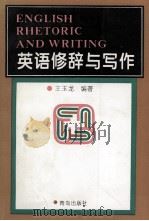
- 英语修辞与写作
- 1996 青岛:青岛出版社
-
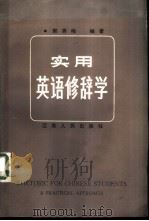
- 实用英语修辞学 (英文)
- 1985
-

- 新修辞学原論
- 1961.06 南雲堂
-
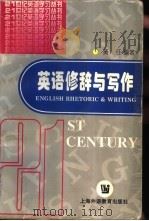
- 英语修辞与写作
- 1996 上海:上海外语教育出版社
-
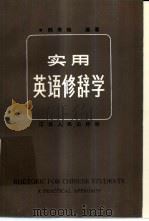
- 实用英语修辞学 英文
- 1985 南京:江苏人民出版社
-
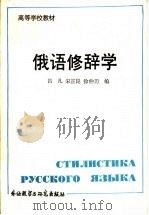
- 俄语修辞学
- 1988 北京:外语教学与研究出版社
-
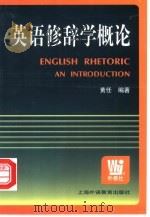
- 英语修辞学概论
- 1999 上海:上海外语教育出版社
-
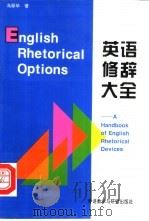
- 英语修辞大全
- 1995 北京:外语教学与研究出版社
-
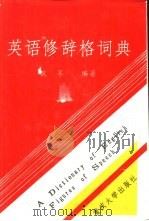
- 英语修辞格词典
- 1992.11 重庆市:重庆大学出版社
-
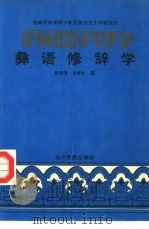
- 彝语修辞学
- 1991 成都:四川民族出版社
-
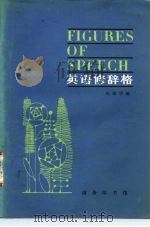
- 英语修辞格
- 1983 北京:商务印书馆
-
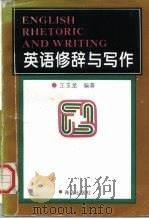
- 英语修辞与写作
- 1991 青岛:青岛出版社
-

- 俗谚大全
- 1997 北京:大众文艺出版社
-
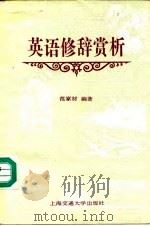
- 英语修辞赏析
- 1992 上海:上海交通大学出版社
-
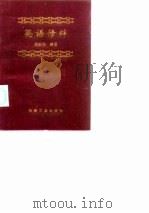
- 英语修辞
- 1988 北京:机械工业出版社
提示:百度云已更名为百度网盘(百度盘),天翼云盘、微盘下载地址……暂未提供。➥ PDF文字可复制化或转WORD